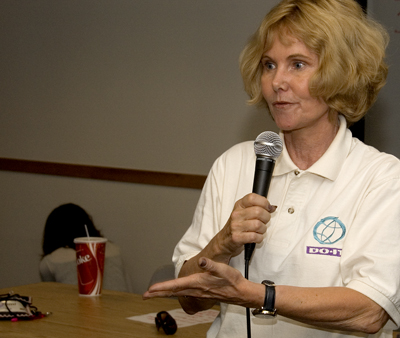Presentation Summaries (Access to Computing in Higher Education: Capacity Building for BPC Projects 2010)

Universal Design in Education
Universal design is about making things usable for the most people possible. Universal design is an attitude that values diversity, equity, and inclusion; a goal; and a practice that makes products and environments welcoming, accessible, and usable. Often the diversity of users is not visible; for example, many disabilities (such as learning disabilities) are not obvious. Universal design is beneficial for people with disabilities) and also for those with diverse characteristics with respect to age, gender, race, ethnicity, etc.
Some examples of universal design include the following:
- Assessment—Test for student knowledge in a predictable way.
- Training software—Notifies users when they don't choose an appropriate selection.
- Science lab—Provide an adjustable-height workstation table that can be used by people with a wide range of physical abilities.
- Purchasing new products—Ask vendors about the accessibility of their products and express your preference for purchasing accessible products to raise awareness.
Often inaccessibility is blamed on the disability; however, the universal design approach focuses on making instruction, services, physical spaces, and technology more accessible in their design. Being proactive minimizes the need to be reactive. Universal design of learning provides multiple means of representation, expression, and engagement. It allows students multiple ways to engage in class discussions and activities. Applying universal design to IT minimizes the need for assistive technology and accommodations. It is important to think about how you might address the needs of students with various types of disabilities when planning classes, before you know whether or not you have someone with a disability in your class.
Careers in Computer Science and Disability
Richard Ladner
Computing has changed the way we live, work, learn, and communicate. Computing drives advances in many fields and enables growth and development in our economy.
High-tech fields are growing at a fast rate. Jobs in computing also have salaries that are at the top of the chart. Shortages are expected to be particularly significant in a number of high-growth fields, with computer science having one of the biggest gaps. Future growth opportunities in the computing industry include new approaches to networking; advances in the fields of science and engineering; safer cars or ones that in some ways drive themselves; models for personalized education, health monitoring, and preventative medicine; and quantum computing. Future developments will lead to a better quality of life for many people.
Individuals enter the computing field for a variety of reasons. This diversity leads to better solutions. People pursue diverse careers following a computer science or other IT education. They do not necessarily migrate to a strict programming position.
NSF data reveals that 18% of students with and without disabilities are interested in natural science and engineering. Of postsecondary students with disabilities, more than 50% attend public two-year schools and nearly 40% attend public four-year schools. Students with disabilities are less likely than students without disabilities to complete a bachelor's degree; only 40% of students with disabilities attained bachelor's degrees, versus 60% of all students. Graduate students with disabilities are less likely than graduate students without disabilities to major in natural science and engineering. NSF estimates that, although people with disabilities make up 16% of the population and 10% of the U.S. workforce, they account for 11% of the STEM undergraduate student population, 7% of the STEM graduate student population, 1% of all STEM doctorate recipients, 5% of the STEM workforce, and 8% of STEM postsecondary faculty.
Students with disabilities tend to drop out of computing majors more often than students in other disciplines, and very few students with disabilities go on to advanced degrees in computing. Some notable exceptions include Stephen Hawking, a world-renowned physicist who has mobility and speech impairments; TV Raman, a blind computer scientist at Google; Christian Vogler, a deaf computer scientist who has worked on sign language recognition; Chieko Asakawa, who worked on social accessibility to improve accessibility of web pages; and Jonathan Kuniholm, a veteran with a disability working on prosthetic limbs. People with disabilities can do almost anything in any scientific field, and some are highly motivated to pursue careers in accessibility research.